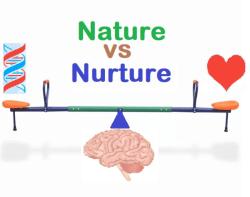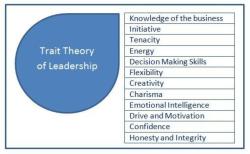What is type an and Type B personality theory?
The Type A and Type B personality theory, introduced by cardiologists Meyer Friedman and Ray Rosenman in the 1950s, is a psychological framework that categorizes individuals into two primary personality types based on their behavior, attitudes, and stress-coping styles. This theory was initially developed in the context of heart disease research and sought to explore the relationship between personality traits and the risk of coronary heart disease.
Here is an overview of Type A and Type B personality theory:
1. Type A Personality:
- Description: Type A individuals are characterized by a set of personality traits and behaviors that are often associated with a high-stress, competitive lifestyle.
- Traits and Behaviors:
- High levels of competitiveness: Type A individuals are driven by a strong desire to excel and achieve success. They often set ambitious goals for themselves.
- Time urgency: They have a constant sense of time pressure and tend to be impatient with delays or slow-paced activities.
- Impatience: Type A individuals can become frustrated and irritated when they encounter situations or people they perceive as slowing them down.
- Aggressiveness: They may exhibit assertiveness and, at times, aggressive behavior in pursuing their goals.
- Perfectionism: Type A individuals often have high standards for themselves and may be perfectionistic in their work and personal lives. They can find it challenging to accept mistakes or imperfections.
- Health Implications: Research initially suggested that individuals with Type A personalities may be at a higher risk of developing coronary heart disease due to the stress and tension associated with their behavior. This notion has been revisited in subsequent research, and the link between Type A behavior and heart disease is considered more complex.
2. Type B Personality:
- Description: Type B individuals are characterized by a more relaxed, easygoing, and less competitive personality style.
- Traits and Behaviors:
- Relaxed and laid-back: Type B individuals do not exhibit the same level of competitiveness and time urgency as Type A individuals. They are less focused on achievement and competition.
- Patience: They are generally patient and do not feel a strong sense of time pressure.
- Lower stress levels: Type B individuals tend to experience lower stress levels and are less prone to anxiety and frustration in high-pressure situations.
- Adaptability: They are often more adaptable and comfortable with change and uncertainty.
- Less perfectionistic: Unlike Type A individuals, Type B individuals are generally less concerned with achieving perfection and are more accepting of mistakes or imperfections.
- Health Implications: Type B personalities are typically associated with lower levels of stress and tension, which may contribute to better overall health outcomes compared to Type A personalities. However, the relationship between personality types and health is complex and influenced by various factors.
It's important to note that the Type A and Type B personality theory has been a subject of debate and critique within the field of psychology. Researchers have questioned the validity and reliability of the personality classifications and the extent to which they predict health outcomes, including coronary heart disease. Furthermore, contemporary psychology emphasizes the use of more comprehensive and scientifically validated personality assessments to understand individual differences and traits. As such, the Type A and Type B personality theory is not as commonly used in contemporary psychological research and clinical practice.
Exploring the Type A and Type B Personality Theory
Type A and type B personality theory is a theory of personality that describes two contrasting personality types: type A and type B. Type A personalities are typically characterized by being ambitious, competitive, and impatient. They may also be more prone to stress and anger. Type B personalities, on the other hand, are typically more relaxed, easygoing, and patient. They may also be more flexible and adaptable.
The theory was first developed by cardiologists Meyer Friedman and Ray Rosenman in the 1960s. Friedman and Rosenman were interested in studying the relationship between personality and heart disease. They observed that people who exhibited type A personality traits were more likely to develop heart disease than people who exhibited type B personality traits.
Since the 1960s, type A and type B personality theory has been the subject of much research. Research has shown that type A personalities are more likely to experience stress, anxiety, and depression. They are also more likely to develop heart disease, high blood pressure, and other cardiovascular problems.
The Origins and Development of Type A and Type B Personality Theory
The origins of type A and type B personality theory can be traced back to the early 20th century. In the 1920s, a psychologist named Franz Alexander published a book called "The Psychoanalysis of the Total Personality." In this book, Alexander described two personality types that he called the "active-aggressive" type and the "passive-receptive" type.
The active-aggressive type was similar to the type A personality type, while the passive-receptive type was similar to the type B personality type. Alexander believed that the active-aggressive type was more prone to stress and psychosomatic disorders, such as heart disease.
In the 1950s, Friedman and Rosenman began their research on type A and type B personalities. They developed a test called the Jenkins Activity Survey to measure type A personality traits. The Jenkins Activity Survey is still used today to measure type A personality.
Applications of Type A and Type B Personality Typology
Type A and type B personality typology has a number of applications. For example, it can be used to:
- Predict the risk of developing heart disease and other cardiovascular problems.
- Identify people who are at risk of stress and burnout.
- Develop strategies for managing stress and improving mental health.
- Improve workplace productivity and teamwork.
- Develop more effective leadership and management styles.
Type A and type B personality typology is a useful tool for understanding individual differences and predicting behavior. However, it is important to note that type A and type B personalities are not mutually exclusive. Some people may exhibit traits of both personality types. Additionally, personality is not fixed and can change over time.
Here are some specific examples of how type A and type B personality typology can be applied:
- A company might use type A and type B personality typology to identify employees who are at risk of burnout. The company could then provide these employees with additional support and resources to help them manage their stress.
- A therapist might use type A and type B personality typology to help their clients understand their personality type and develop strategies for coping with stress and anxiety.
- A manager might use type A and type B personality typology to develop more effective leadership and management styles. For example, a manager might use a different approach to motivating and managing type A and type B employees.
Overall, type A and type B personality typology is a useful tool for understanding individual differences and predicting behavior. It can be applied in a variety of settings, such as the workplace, the home, and the therapy office.












